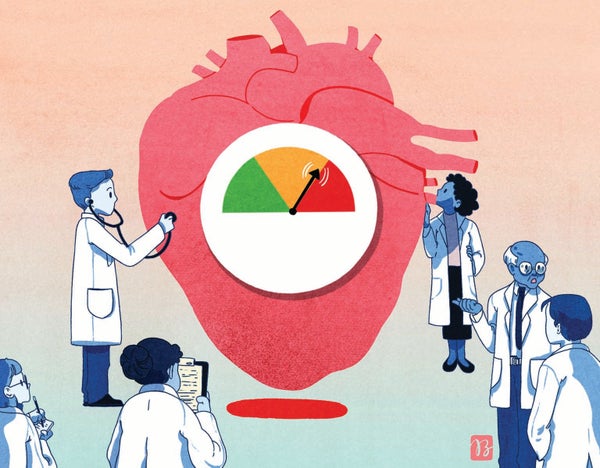Anyone who has annual check-ups, as I do, knows that an optimal cholesterol level consists of not one number but two. Low-density lipoprotein cholesterol (LDL) should be less than 130 milligrams per deciliter (mg/dL), ideally. High-density lipoprotein cholesterol (HDL) should be more than 40 mg/dL. LDL plays the villain in this story, the “bad” cholesterol to HDL's heroic role as the “good” cholesterol.
This idea came out of the Framingham Heart Study, the pioneering research project, begun in 1948, that identified many risks for cardiovascular disease. High levels of LDL increase a person's risk of heart attacks and stroke because it builds up in artery walls and can cause atherosclerosis. HDL at higher levels, in contrast, can lower overall cholesterol levels by binding with LDL and moving it to the liver, where it is excreted as waste. A person's ratio of one type to the other type matters.
But recent research shows that the story of HDL is not so simple—more Goldilocks than Jekyll and Hyde. Those studies reveal that too little HDL is insufficient to lower LDL, but too much HDL actually heightens the risk of death. The “just right” amount of HDL lies between 40 and 80 mg/dL.
In a study of more than 400,000 people from the general population in the U.K., men with HDL levels below 40 or above 80 and women with levels above 100 were at greater risk of both mortality from all causes and cardiovascular death in particular. There were similar findings in people who already had certain risky conditions. Two smaller groups of patients with coronary artery disease and HDL levels above 80 had an alarming 96 percent higher risk of dying overall than those with lower HDL levels. And a study of more than 11,000 people with hypertension in Italy found significantly higher risk of cardiovascular events in those with HDL levels below 40 and above 80.
High levels of HDL have also been shown to affect bone density. Research on more than 16,000 Australians over the age of 70 found that those with the highest HDL levels were at a 33 percent higher risk of suffering fractures than those with lower levels.
Additional troubling evidence comes from clinical trials for drugs such as niacin that attempt to raise HDL levels on the theory that higher is better. “Those drugs were never shown to be of benefit when they were employed” along with statins, drugs that lower LDL levels, says Arshed Quyyumi, director of the Emory Clinical Cardiovascular Research Institute and a co-author of two of the recent studies.
No one knows why high levels of HDL are so harmful. “That's the million-dollar question,” says cardiologist Gaetano Santulli of Albert Einstein College of Medicine, who is studying HDL. One possibility is that at higher levels, the structure of HDL molecules changes in a way that prevents them from binding tightly with circulating cholesterol to help clear the excess from the blood, Santulli says. Or it could be that at very high levels, overall amounts of cholesterol tip into the danger zone.
Fortunately, very high levels of HDL are found in less than 7 percent of the general population—one reason the risk that they carry was missed. They are more common in women but prove riskier in men, so ongoing studies are investigating the possibility that estrogen is protective.
Unfortunately, HDL levels are mostly out of individual control. They rise with exercise and with modest alcohol consumption—although heavy drinking increases total cholesterol and cardiac risk—but there appears to be little a person can do to lower them if they become excessive. We should, therefore, focus on keeping “bad” LDL levels low. Statins have been well established as reducing cardiovascular risk. In addition, a healthy lifestyle is key, says Monira Hussain, a chronic disease epidemiologist at Monash University in Melbourne, Australia, and a co-author of the bone fracture study. High-fiber, low-fat diets and increased physical activity help to lower LDL levels. Smoking is doubly harmful: it raises LDL and lowers HDL.
Cardiologists, for their part, need to change how they assess risk in their patients. “Oftentimes we go around telling people, ‘Your HDL is sky-high. You're so protected,'” Quyyumi says. We now know that isn't true and that—like Goldilocks—we should all aim for the middle ground.
This is an opinion and analysis article, and the views expressed by the author or authors are not necessarily those of Scientific American.
